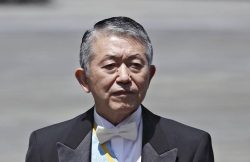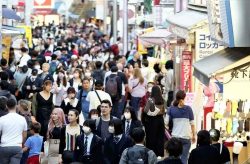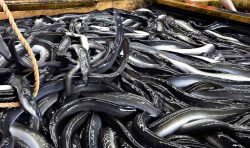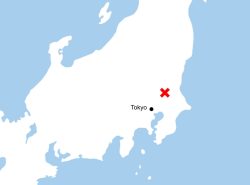Abolition of Swimming Classes: Shouldn’t Finding Ways to Continue Lessons Come First?
17:01 JST, April 19, 2025
Junior high schools have discontinued swimming classes one after another. Surrounded by the sea, Japan also has many rivers. Is it reasonable not to teach children how to swim? It is desirable that many efforts will be made to continue swimming classes in accordance with local circumstances.
In Numazu, Shizuoka Prefecture, all 17 municipal junior high schools will begin ending swimming classes this school year. The reason cited is that continuing the classes is financially difficult, as repairing the aging pools would cost about ¥200 million per school.
Some municipalities, such as Konosu, Saitama Prefecture, never resumed swimming classes that had been suspended since the COVID-19 pandemic and ended up permanently discontinuing them.
Many swimming pools at schools were built in the 1960s and 1970s. In addition to repair costs due to their deterioration, high water bills and the burden on teachers of cleaning the pools and managing water quality are also reasons for ending swimming classes.
Japan’s Course of Study sets swimming as a requirement for students from the first grade of elementary school to the second year of junior high school. Not holding swimming classes is only permitted in cases where securing swimming facilities is difficult, but abolishing swimming classes simply due to financial constraints or teacher-related circumstances appears to be a hasty decision.
Calls for swimming to be taught in schools gained momentum in the wake of a 1955 disaster in which 168 people died when a ship, carrying elementary and junior high school students on a school trip, sank off Takamatsu. The Education, Culture, Sports, Science and Technology Ministry has also noted the importance of swimming lessons in terms of protecting children’s lives from water-related accidents.
On the other hand, in recent years, some students have objected to the swimwear and complained about getting sunburned, among other matters. In consideration of such voices, steps have been increasingly taken, including introducing gender-neutral swimwear and allowing the use of rash guards that cover the arms and legs.
Holding swimming classes at facilities such as public indoor pools is a possible option that also serves as a measure against heatstroke.
The Kyoto municipal government has contracted out swimming classes for some of its elementary and junior high schools to private companies since last school year. The move has reportedly reduced the burden on teachers and will also lower the long-term cost compared with maintaining school pools. This initiative could be an example for other municipalities.
It is also hoped that consideration will be given to reducing the number of school pools to be renovated and allowing multiple schools to share the renovated ones. Sharing the pools between elementary and junior high schools must also be an option.
Japan’s competitive swimming is at a high level internationally. Abolishing swimming classes could result in a decline in the number of people participating in the sport and go against the trend of promoting sports.
It is hoped that each municipality will exercise its wisdom to continue offering swimming classes rather than concluding that discontinuing them is the only option due to difficulties.
With the number of students declining due to Japan’s falling birth rate, local governments are indeed struggling with financial difficulties. The education ministry should fully ascertain the actual conditions in each area and work out effective measures to make swimming classes sustainable without leaving it entirely up to local governments.
(From The Yomiuri Shimbun, April 19, 2025)
"Editorial & Columns" POPULAR ARTICLE
-

Violations of Subcontract Law: Major Automakers Must Eliminate Old Practices
-

Local Governments’ Tax Revenues: Devise Ways to Correct Imbalances in Tax Sources
-
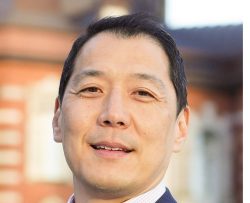
5 Japanese Business Dinner Mistakes to Avoid — and What They Taught Me About Business in Japan
-

Heavy Rains in Asia: Support for Victims, Flood-Control Measures Urgently Needed
-

Rice Coupons: A Misguided Approach to Countering Rising Prices
JN ACCESS RANKING
-
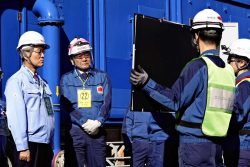
Keidanren Chairman Yoshinobu Tsutsui Visits Kashiwazaki-Kariwa Nuclear Power Plant; Inspects New Emergency Safety System
-
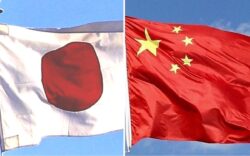
Imports of Rare Earths from China Facing Delays, May Be Caused by Deterioration of Japan-China Relations
-
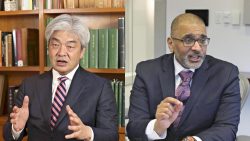
University of Tokyo Professor Discusses Japanese Economic Security in Interview Ahead of Forum
-

Japan Pulls out of Vietnam Nuclear Project, Complicating Hanoi’s Power Plans
-

Govt Aims to Expand NISA Program Lineup, Abolish Age Restriction












